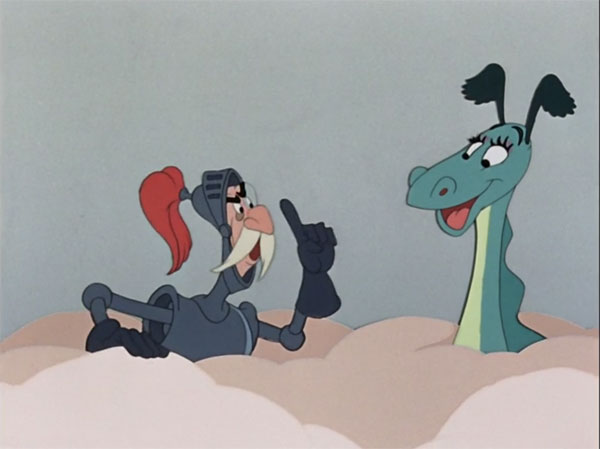
It took me a long time to catch up with The Reluctant Dragon; my first viewing was on Turner Classic Movies in 2015. It represents a hidden gem from Disney’s past that deserves a lot more attention. Disney Plus gives us the perfect opportunity to catch up with forgotten movies from the studio’s early days. Despite its live-action segments, this film continues my look back at Disney’s feature animated films as the fourth part.
Released in 1941, this barely known feature mixes animated shorts with a staged behind-the-scenes tour of the Disney Studios in Burbank. It strikes an interesting balance in revealing what’s behind the curtain while removing the rough edges. Our entry point is Robert Benchley, an actor and comedian playing an exaggerated version of his everyman persona.
The thin story sends Benchley to the studio to pitch an adaptation of Kenneth Grahame’s The Reluctant Dragon story to Walt Disney. Pushed by his wife (Nana Bryant) to make the pitch, Benchley is more interested in visiting the various departments and avoiding this meeting. We follow him on the episodic journey, which takes breaks for animated shorts that reveal Disney’s latest techniques and ideas.
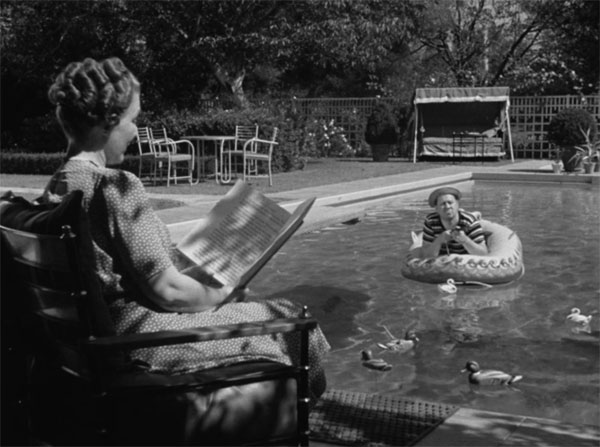
An Artificial Creation
What do we make of this film? It provides a window into the past for Disney fans. The studio tour foretells Walt’s brilliant approach to the Disneyland TV series 13 years later. He shows us pure joy from the animators and crew working at Disney. It is essentially a commercial for the magic of Disney packaged within a feature film.
Audiences felt cheated in 1941 because the animated segments were only part of it. This was not Snow White and the Seven Dwarfs or even Fantasia. The company was facing money troubles and a vicious labor dispute. None of the strife is evident on screen, and it’s easy to look at this film’s presentation as a portrait of a thriving company. The truth was different.
Benchley originally appears shooting fake ducks in his pool while his wife reads Grahame’s story. It makes me wonder about normal happenings at this house. This opening sets up Benchley as a dreamer who cares little about business. His guide is ready to take him to meet Walt, but Benchley is distracted by an attractive robed girl heading into an art class.
The set-up to reveal the elephant model is clever; a student drawing an elephant with a stereotypical Asian hat is less thrilling. The mix of actors and actual Disney employees is handled well, but we can easily spot the legitimate artists. Clarence Nash and Florence Gill demonstrate the voices of Donald Duck and Clara Cluck, and they are the real deal. The employee named Doris (Frances Gifford) is less convincing.
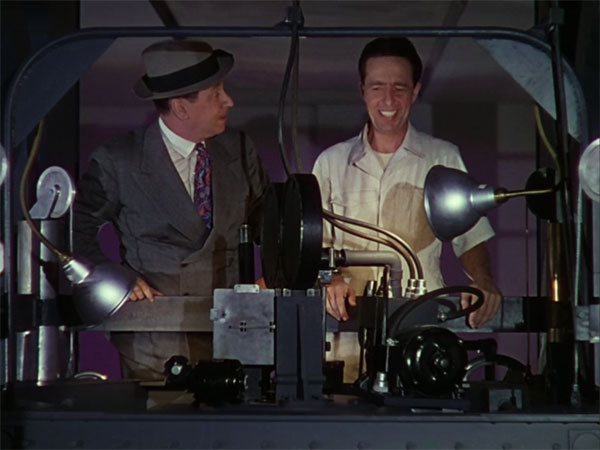
Extra Touches
Despite the documentary feel, certain moments break the fourth wall. The story begins in black and white and switches abruptly to color in the camera room. This sets up the depiction of the multiplane camera and gorgeous scenery. Benchley even takes a moment to look at his outfit and marvel at the Technicolor. Artists also sketch an elephant to resemble him and sculpt an exaggerated bust of his face that he carries around the studio.
We learn more about how animated films are created, but it’s never a dry explanation. Benchley’s regular guy approach keeps the tone light despite all the work happening on screen. He chats with Bambi in an animation cel and gawks at a female centaur in the model shop. The audience gets the joke and realizes it’s partial reality.
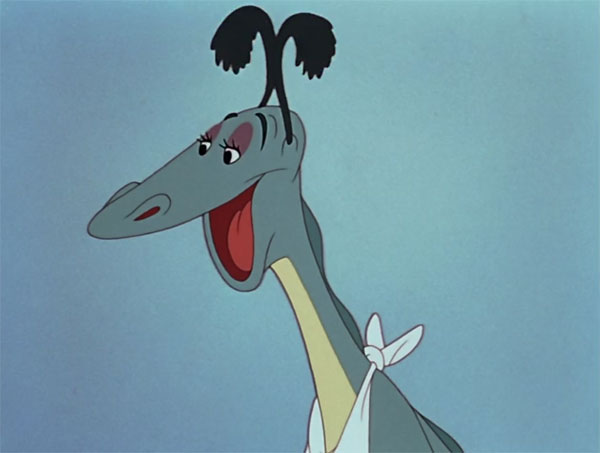
A Clever Use of Animation
The animated segments occupy about half of the 74-minute feature and appear creatively inside the main story. Benchley meets the guys in the storyboard department, who show him their latest creation Baby Weems. We observe the story through limited animation with certain elements moving while others are static. The visual technique provides more charm than the actual narrative.
Benchley also meets animators like Ward Kimball and Fred Moore, and they present the Goofy cartoon How to Ride a Horse. It would receive an official release in 1950 beyond its appearance here. The mix of slapstick from Goofy along with the serious narrator in this type of “how to” film provides some good laughs.
The title film arrives at the end and is a charming 20-minute adaptation of The Reluctant Dragon. Benchley meets Walt in the screening room, but the film on screen is the story he tries to adapt. It offers a clever joke that reminds us how little the narrative matters. Walt looks much younger than typical images. I enjoyed the idea of a peaceful dragon that loves poetry.
The dragon is introduced while taking a bath and is the least imposing dragon of all time. His opponent is Sir Giles, who has built a reputation as a slayer but prefers to relax or create poems. They are a likable pair! A blood-thirsty crowd awaits the battle, however. The comic fight is an inventive solution to the problem from pals with little interest in their normal roles. You might call them reluctant, just like Benchley.
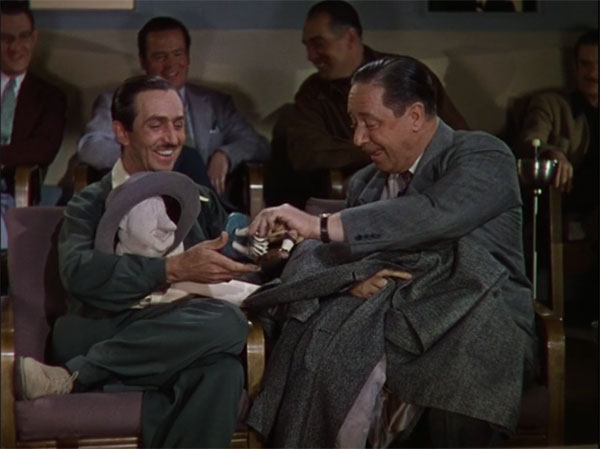
A Tumultuous Era for Disney
Casual Disney fans will probably get antsy during the studio tour and wait for the animation. Hardcore devotees may be different, however. The Burbank lot had just opened in 1940, so this is a very early view of a Disney studio that still functions today.
Despite the actors’ involvement, there’s still a lot to see within this controlled reality. It doesn’t totally work as a feature film, however. It’s more like a longer episode of Walt’s TV series with better production values. This explains the confused reactions from general audiences. They hadn’t been exposed to this formula or seen the package films that Disney would use to stay afloat in the ‘40s.
The Reluctant Dragon set the stage for the leaner years where the company just tried to survive. Dumbo and Bambi followed, but Disney failed to make another feature-length animated story after them until Cinderella in 1950. It is easy to forget that the behemoth we know today struggled to be financially viable even after Snow White’s success. Walt needed cheaper projects to keep the lights on until the opportunities for growth returned following the war. The Reluctant Dragon fell short at the box office, but it served a purpose and remains a curiosity more than 70 years after its release.
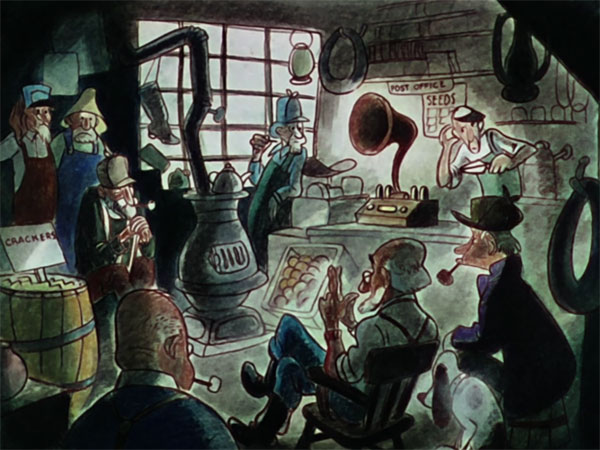
Related Articles: The Reluctant Dragon
Snow White and the Seven Dwarfs
This post contains affiliate links. Making any purchase through those links supports this site. See full disclosure.



Leave a Reply